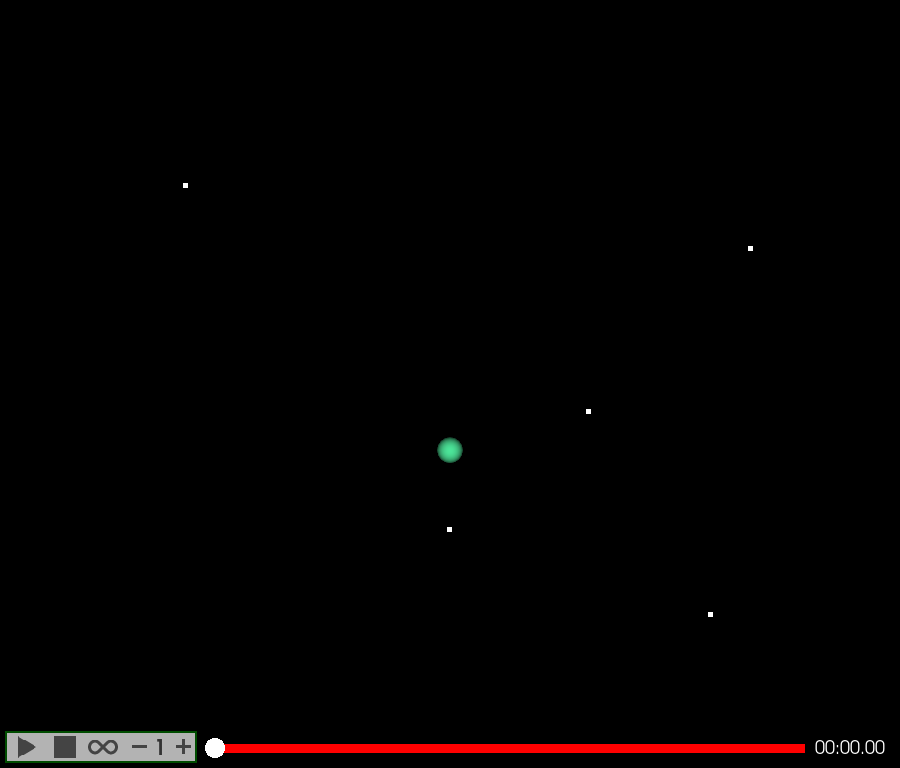Note
Go to the end to download the full example code
Keyframes Spline Interpolator#
Tutorial on making keyframe-based animation in FURY using Spline interpolators.
import numpy as np
import fury
scene = fury.window.Scene()
showm = fury.window.ShowManager(
scene=scene, size=(900, 768), reset_camera=False, order_transparent=True
)
Position keyframes as a dict object containing timestamps as keys and positions as values.
creating FURY dots to visualize the position values.
pos_dots = fury.actor.dot(np.array(list(position_keyframes.values())))
creating two timelines (one uses linear and the other uses’ spline interpolator), each timeline controls a sphere actor
sphere_linear = fury.actor.sphere(np.array([[0, 0, 0]]), (1, 0.5, 0.2), radii=0.5)
linear_anim = fury.animation.Animation()
linear_anim.add_actor(sphere_linear)
linear_anim.set_position_keyframes(position_keyframes)
Note: linear_interpolator is used by default. So, no need to set it for this first animation that we need to linearly interpolate positional animation.
creating a second timeline that translates another larger sphere actor using spline interpolator.
sphere_spline = fury.actor.sphere(np.array([[0, 0, 0]]), (0.3, 0.9, 0.6), radii=1)
spline_anim = fury.animation.Animation(actors=sphere_spline)
spline_anim.set_position_keyframes(position_keyframes)
Setting 5th degree spline interpolator for position keyframes.
spline_anim.set_position_interpolator(fury.animation.spline_interpolator, degree=5)
Wrapping animations up!#
Adding everything to a Timeline to control the two timelines.
First we create a timeline with a playback panel:
timeline = fury.animation.Timeline(playback_panel=True)
Add visualization dots actor to the scene.
scene.add(pos_dots)
Adding the animations to the timeline (so that it controls their playback).
timeline.add_animation([linear_anim, spline_anim])
Adding the timeline to the show manager.
showm.add_animation(timeline)
Now that these two animations are added to timeline, if the timeline is played, paused, …, all these changes will reflect on the animations.
interactive = False
if interactive:
showm.start()
fury.window.record(
scene=scene, out_path="viz_keyframe_animation_spline.png", size=(900, 768)
)

Total running time of the script: (0 minutes 0.114 seconds)
